For the first time a nonfiction film will open the prestigious New York Film Festival which began September 30th and ends October 16th. “13th,” a new documentary by Selma Director Ava DuVernay, on the subject of incarceration, equates the U.S. prison system to modern day slavery. The man behind the lens of “13th,” is Hans Charles, a Professor of Film and Video Studies at George Mason University. Charles shared the director of photography role with Kira Kelly. “13th,” named for the 13th Amendment which ended slavery in the U.S., tackles the issue of mass incarceration, the three strikes law and the rise of private prisons. Charles, who once worked with former prisoners as a mental health specialist, said it was his knowledge of these social issues that ultimately landed him the job with DuVernay.
Tell us about the documentary “13th.” What inspired this film about America’s prison system?
Hans Charles: I’m not sure exactly what inspired Ava to make the film. She got approached by Netflix and they were open to her suggesting projects and they want to work with her. I know she read Michelle Alexander’s book the New Jim Crow and I think the book was in the back of her mind when this project came together. As far as I know that is part of what inspired the film.
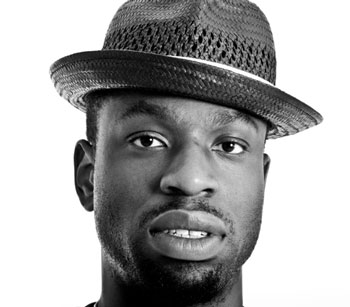
You and Kira Kelly shot the film. How did you meet Ava DuVernay and what led to your selection as a cinematographer?
Hans Charles: I met Ava during production for a film she directed called My Mic Sounds Nice. That film was about the history of the women in hip hop and was for BET. I was working as Bradford Young’s camera assistant. While doing that film with Ava, she talked about shooting her second feature. About 6 months later I got a call from Ava and she asked if I wanted to work on Middle Of Nowhere. Before the film came out, I got involved with Ava’s distribution entity AFFRM, now known as ARRAY. As a graduate student at Howard University, I co-founded a filmmaker speaker series with faculty member Dr. Montré Missouri. We invited Ava to come speak and screen Middle. After she came and we had a great screening, she asked for our speaker series (now known as parallel film collective) to become a founding partner with AFFRM. Ava and another director Gloria LeMort were the first two directors who I worked with as a focus puller, who then asked me to shoot a project.
Ava asked me to shoot parts of her film Venus Vs. which was a film about how Venus Williams helped to get equal pay for men and women in tennis. I shot the action sequences here in DC. For that film, I shared credit with two other cinematographers including Arthur Jafa who is a mentor/collaborator of mine. After the release of Venus Vs. , Ava and I developed our relationship because of ARRAY. In those days we held regular conference calls with all the participating cities. I think those meetings helped her understand my commitment to a type of story telling
Take us through your process as a cinematographer. What did you bring to the creative process?
Hans Charles: As a cinematographer, one of the primary things I do is look for inspiration everywhere. I look for inspiration in art, news, culture and in my interactions with people. When it comes to a project, I read the script. If I feel like the script speaks to me or if I can see the film in my mind, then I know I want to be a part of it.
I’ll let the director know that I want to work with them, and if I am chosen, I get to work on the pre-production process with the director. We talk out the story, plot, and the characters based on the director’s vision. In terms of cinematography I believe it’s my job to serve the vision of the director. I bring everything I know to bear to make the director’s vision happen. I collect images as inspiration frames and present those images to the director. If it matches the director’s vision, I continue along the visual path and expand my research.
The biggest part of the process is continuing conversations between myself and the director. Once we are in production, I let location speak to me. I try to get a feel for the location and let it dictate what we’re going to do based on where and what is. I try not to force anything. The director and I talk about composition and camera temperament and we continue from there.
Were there any special challenges you faced in shooting this film?
Hans Charles: The biggest challenge I faced shooting 13th was the amount of time we had to shoot each interview. We had anywhere between 3 to 5 interviews on any particular day. Some days, we could have 1 or 2 locations, sometimes more. Ava challenged me to give her a different look for each person, per location. I asked myself how to keep the visual elements I was bringing to the table in line with what Ava wanted to see.
She is very clear about communicating her vision. You will know what her expectations are for visual motif and camera temperament she sees for her film. I made it my business to compose interesting frames for each interview as much as possible. If I composed mediocre frames Ava would let me know. So I worked to make compositions to take her breath away. She made a ton of suggestions to get each frame, just right. My big thing was to make sure she could focus on the interview process and not to worry about the composition. Poor composition can distract the audience from a film’s power. During the interview, I had to focus and make sure I took care of all the important details.
Why in your view is it important that people see this film?
Hans Charles: The most important reason for people to see this film is to get a historical perspective on the criminal justice system that we have today. Many people assume the people in our prisons deserve their jail sentences. The film helps to construct a historical perspective to challenge that idea.
What’s the take away message?
Hans Charles: One should walk away from the film with a holistic understanding of our criminal justice system
What was it like to work with Selma Director Ava DuVernay?
Hans Charles: I always get this question. What is it like working for Ava. I’ve known Ava since My Mic Sound Nice. In some important ways, she hasn’t changed. I think she’s clear about what it is she wants to do. Your job as part of her team is to keep her informed so she has the information and tools to reach her vision. I know she’s grown as a director. She’s been doing bigger and bigger movies. But when Ava asks you to do something, do it, and she will leave you to your own creative devices. She loves to laugh, and has always loved to take pictures of people on the crew.
How would you describe her creative process?
Hans Charles: I don’t know if I’m the person who can speak in detail about Ava’s creative process. I know I’ve talked to her about how she goes about executing pre-production on her films. I have talked to her about her writing process, but I think she is the best person to ask about the details of her process. I’m sure It evolves with each project. Notice each project has gotten bigger and bigger. I know when I work with Ava, I try to have answers to questions she may ask and I try to put myself in the position where when she makes a request, I can fulfill it.
You are a film professor at George Mason University. Have your students seen the film? If so what has been their reaction?
Hans Charles: I don’t know if my students have seen the film. I have shown the trailer to some classes. I don’t want to push my work onto my students and want to make sure they see all kinds of work and come to that work organically. Sometimes in class I show them clips of my work. But I think it’s important to me, as a professor, that my students have an organic relationship to the work that comes their way. I do push them to experience the work of filmmakers I admire and respect.
What advice do you have for young people who are considering a career as a cinematographer?
Hans Charles: Watch as many different types of films as possible. Be true to yourself and your particular perspective. Don’t try to be somebody else. You need to make movies from your shoes. You need to make movies from your perspective . I tell my students all the time. There are no new stories under the sun. There are only new perspectives. Study film history as much as possible. Study art history as much as possible. Study Philosophy, English, the humanities, couple that study with film, and your voice will shine through any project.
Where can we see the documentary 13th?
You can see 13th on Netflix streaming and you can find it in limited theaters across the country.
13th has been described as an in-depth look at the prison system in the United States and how it reveals the nation’s history of racial inequality. Does this particular subject matter hit home for you in any way?
Hans Charles: I definitely think that the subject matter of 13th is important to me. 1 out of 3 black males may have an interaction with the American criminal justice system. I have been one of those people. My interaction with the justice system almost ended with my life as I know it. I would have headed in a completely different direction. I really am blessed. The system got a hold of me, and tried to snag me and drag me down. That experience created a curiosity in the policies surrounding the criminal justice system. I am also interested in stories of returning citizens. I’ve tried to think about what is it that I can do to create an environment that makes it easier for returning citizens to move on with their lives and contribute to society.
I understand most of the film’s subjects were shot in empty warehouse spaces. Tell us why that was so effective.
Hans Charles: Ava had a vision. She wanted to contrast the stature and stories of some of the subjects with stark environments. I referenced a specific photographer and pitched that idea to Ava. She also came to the table with her own strong visual ideas. What you see is her vision.
You are of Haitian descent. Have you shot any films in Haiti?
Hans Charles: I shot a small internal corporate communication project for a big energy company NRG, in Haiti a few years ago. We shot for about 5 days in Petionville Haiti. Some of the crew members were from this small film school in Haiti. Marc Baptiste has been a big champion of the film industry in Haiti and has done a lot to support it. I’m hoping in the future to be more involved with the Haitian film industry.
What’s on your bucket list in terms of your career?
Hans Charles: They are quite a few things I want to do in my career. I don’t have a bucket list. I’m ready to shoot a major feature. I love doing television and would love to do some more. Mostly, I would love to work with my friends and see their projects through. I really want to have a respectable career as a cinematographer. I want my work to reflect my philosophical approach to art and the role of the artist in society. I take that idea seriously and whimsically at the same time.
What other exciting projects are in the works for Hans Charles?
Hans Charles: Currently I’m working on production for a feature-length film call Jinn for director Najila Munim. My creative partner Menelek Lumumba is finishing work on a comedy we are hoping to start shooting in 2017. It’s an amazing script about a retired football player. In between I’m shooting commercials and teaching, I do commercial work with my producing partners Caroline Onikute and Cordielle Street. They run our production company Align Pictures out of New York. I spent most of my time trying to keep up with their great work. If I’m not shooting, I’m teaching and being a dad and husband. At home, family is the focus. This film stuff is secondary.




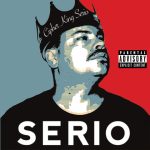

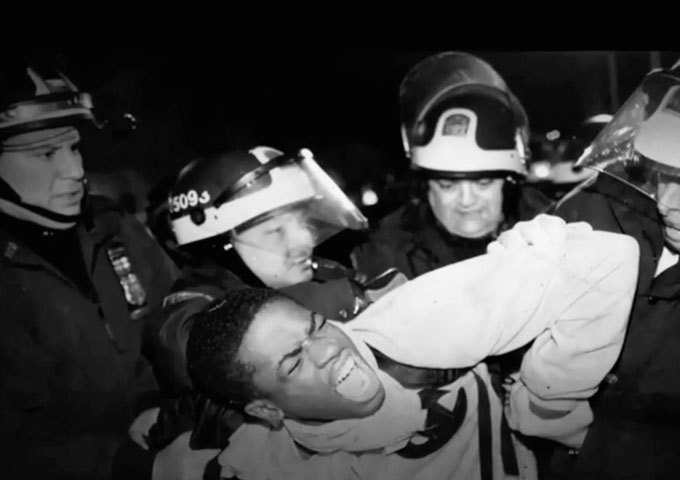





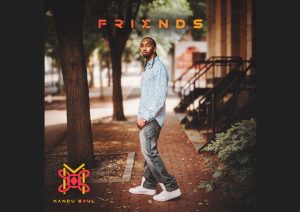
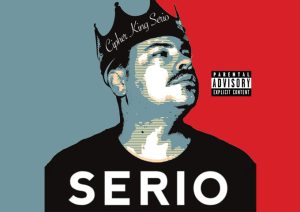
So proud of you, Hans!